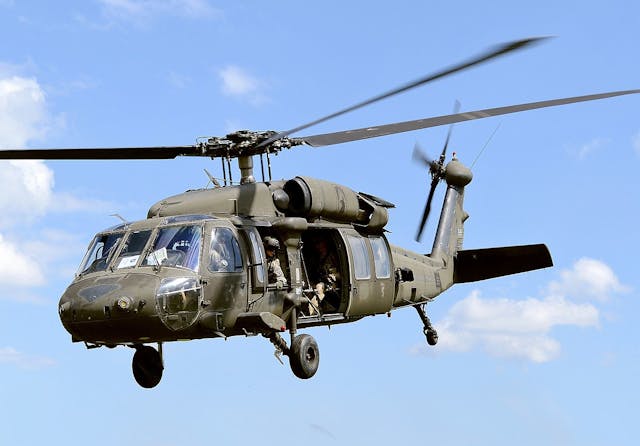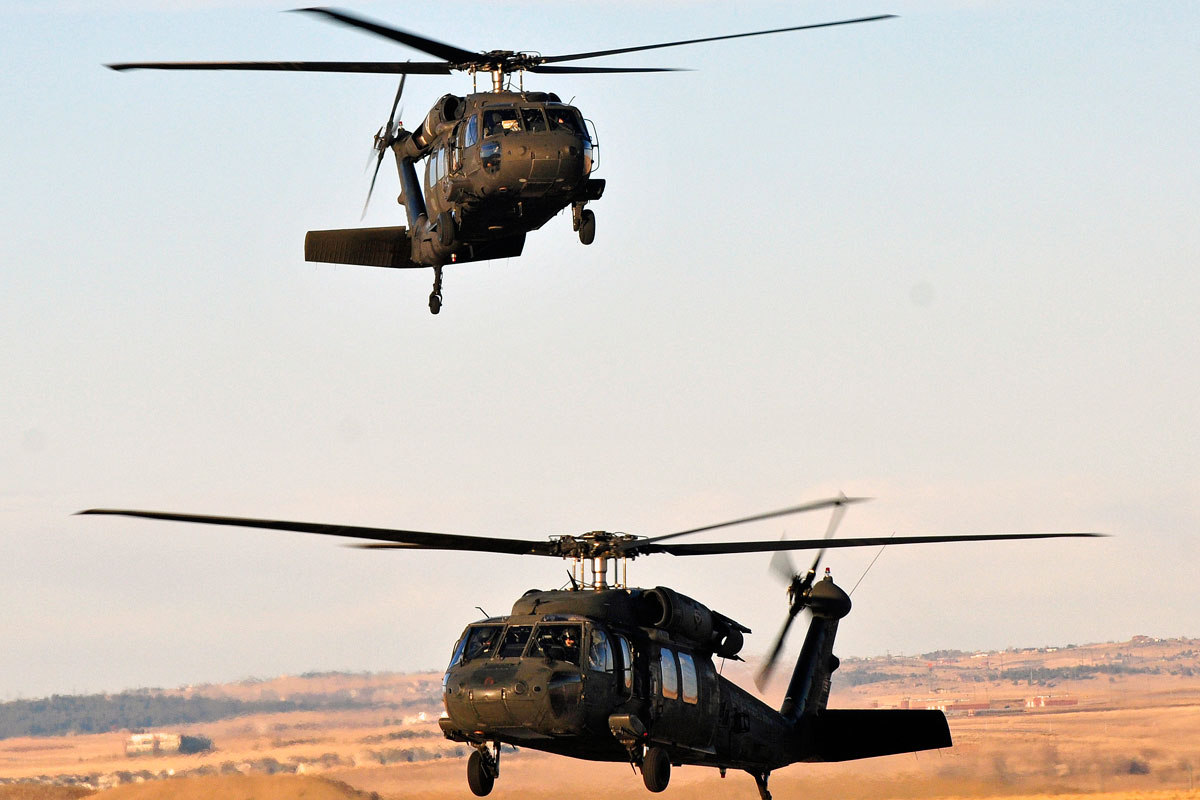Comprehensive Introduction of the UH-60 Blackhawk Helicopter
The UH-60 Blackhawk helicopter, a characteristic of modern-day military aviation, has played a vital duty in varied operational movie theaters since its introduction in the 1980s. As we discover its complex history, style specs, and technological developments, it becomes obvious that the Blackhawk's influence expands much past the combat zone.
History and Development
The UH-60 Blackhawk helicopter has actually regularly been a cornerstone of united state armed forces air travel given that its introduction in the late 1970s. Developed by Sikorsky Airplane, the Blackhawk was designed to fulfill the Army's demand for a versatile energy helicopter that could do a range of objectives in different settings. UH-60 Blackhawk. The advancement process began in 1972, with the initial model flying in 1974
Its operational launching came during the 1980s, where it was promptly acknowledged for its dexterity, rate, and capacity to transport soldiers and cargo effectively. The Blackhawk's efficiency in the 1983 Grenada intrusion and succeeding operations solidified its credibility as a reliable workhorse for the united state Army. Over the years, the helicopter has actually undertaken various upgrades and variants, adapting to progressing army requirements, including the addition of sophisticated avionics and tool systems.

The Blackhawk's style has actually also developed to offer various branches of the military and allied forces, showcasing its adaptability. Today, it remains an integral component of united state army operations and proceeds to be a recommended selection for rotary-wing aviation across the globe, showing its long-lasting tradition and ongoing significance in modern-day war.
Design and Specifications
Engineered for efficiency and adaptability, the UH-60 Blackhawk helicopter features a durable style that boosts its functional capabilities. With a size of 64 feet and a rotor size of 53 feet, the Blackhawk is made to suit a broad range of objectives.
The helicopter is powered by 2 General Electric T700-GE-701C engines, each providing 1,800 shaft horsepower, which makes certain high levels of reliability and efficiency in varied atmospheres. The blades system is a four-blade, fully expressed design that allows for exceptional maneuverability and stability, also in unfavorable conditions.
Furthermore, the UH-60 incorporates innovative avionics and flight control systems that enhance situational awareness and pilot control. The cabin is designed for fast reconfiguration, enabling it to support various mission profiles, from troop transport to medical evacuation. On the whole, the style and specifications of the UH-60 Blackhawk show a dedication to operational excellence and flexibility in the area.

Functions and Missions
With its robust style and advanced capabilities, the UH-60 Blackhawk helicopter offers a wide range of roles across numerous armed forces operations. Initially developed for troop transport, the Blackhawk has actually evolved to perform a broad array of goals, including clinical emptying, search and rescue, and logistical assistance. Its flexibility permits it to operate in varied environments, from urban landscapes to sturdy surfaces.
In battle scenarios, the Blackhawk is critical for putting and removing unique procedures forces, supplying them with the mobility needed to perform their objectives effectively. Furthermore, the helicopter can be outfitted with sophisticated communication and avionics systems, enhancing its duty as a command and control system in vibrant battle situations.

Technical Developments
Integrating cutting-edge innovations has substantially improved the efficiency and capacities of the UH-60 Blackhawk helicopter. The unification of advanced avionics systems, including electronic trip control and improved situational awareness displays, has boosted pilot navigation and decision-making in complicated environments. These systems enable real-time information handling, facilitating far better interaction and coordination during objectives.
Furthermore, the Blackhawk's airframe has actually undertaken significant upgrades, using composite materials that decrease weight while boosting structural integrity. This alteration adds to boosted gas effectiveness and functional array. The helicopter is additionally equipped with sophisticated propulsion systems that give higher power and reliability, making sure optimum efficiency in varied problems.
Additionally, the integration of modern-day sensors and weapon systems has actually expanded the Blackhawk's convenience. Improved targeting abilities and progressed danger discovery systems enable reliable engagement in fight circumstances, increasing objective success prices.
Worldwide Influence and Legacy
The UH-60 moved here Blackhawk helicopter has actually made an extensive influence on humanitarian efforts and army operations worldwide given that its intro in the late 1970s. Its flexibility and progressed technology have enabled it to serve in various roles, including army transport, medical evacuation, and logistical support (UH-60 Blackhawk). The helicopter's performance in battle scenarios has actually redefined airborne movement, allowing forces to react promptly and efficiently to vibrant battleground problems
Worldwide, the Blackhawk has been deployed in various conflicts, from the Persian Gulf to the Balkans, showcasing its adaptability to varied atmospheres. Its function in humanitarian objectives, such as catastrophe relief and search-and-rescue operations, has additional solidified its track record as a trustworthy possession in dilemma situations.
The heritage of the UH-60 extends beyond its army applications; it has actually likewise influenced helicopter style and functional teaching worldwide. Its success has prompted other nations to establish comparable aircraft, this link improving worldwide air travel criteria and operational capacities. As the Blackhawk remains to advance with modern upgrades, its influence on both military and civilian aeronautics stays considerable, ensuring its area in background as one of the most famous helicopters of its time.
Conclusion
The UH-60 Blackhawk helicopter stands as a testimony to cutting-edge engineering and functional army application. Its design and capabilities have significantly designed contemporary aerial operations, boosting army wheelchair and operational efficiency. The ongoing developments in technology remain to solidify the Blackhawk's role in contemporary war and altruistic initiatives. Because of this, the Blackhawk has actually left an indelible mark on armed forces aeronautics, influencing future helicopter designs and redefining tactical approaches around the world.
The UH-60 Blackhawk helicopter, a hallmark of contemporary army air travel, has actually played an indispensable duty in diverse functional theaters because its intro in the 1980s - UH-60 Blackhawk.The UH-60 Blackhawk helicopter has actually constantly been a cornerstone of United state military air travel since its intro in the late 1970s.Engineered for efficiency and versatility, the UH-60 Blackhawk helicopter includes a durable layout that boosts look at here its functional abilities.With its robust layout and advanced capabilities, the UH-60 Blackhawk helicopter serves a wide variety of roles across numerous military operations.The UH-60 Blackhawk helicopter has actually made an extensive effect on military procedures and humanitarian efforts worldwide since its intro in the late 1970s